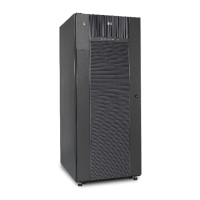52 HP StorageWorks Disk Array XP Operating System Configuration Guide: MPE/iX
1. Existing MPE/iX 7.5 boot disk is available (page 54):
If the system already has an MPE/iX Release 7.5 OS installed on an
existing disk device (internal or external SCSI disk), use the following
procedure.
• Boot and run the OS from the existing Ldev 1 boot disk.
• Use the fcscan –h utility program for native Fibre Channel I/O path
mapping. This will give you the BOOT MENU PATH for all of the
native Fibre Channel attached disk array devices.
• Select the desired disk array LUN to be your new Ldev 1.
• Use the BOOT MENU PATH from fcscan as the primary boot path.
2. No existing MPE/iX boot disk available and disk array is direct Fibre
Channel connected (page 57):
If the system does not already have an MPE/iX Release 7.5 OS
installed, and the disk array you want to use for MPE/iX Ldev 1 is
native Fibre Channel and directly cabled to the host HP e3000 system
(no Fibre Channel switch), then use the following procedure.
• Use the MAPPER2 I/O mapping utility of the ODE (Offline
Diagnostic Environment) to display the boot menu I/O paths for all
of the LUNs of that disk array. MAPPER2 will correctly detect and
report the paths for a direct-Fibre-Channel-connected disk array.
• Boot the system from the SLT (System Load Tape) on the alternate
boot path.
• Run ODE>MAPPER2.
• Select the desired disk array LUN to be your new Ldev 1, and use the
I/O path reported by MAPPER2 to be the primary boot path.
• Install the OS onto the new Ldev 1.
3. No existing MPE/iX boot disk available and disk array is Fibre Channel
switch connected (page 59):
If the system does not already have an MPE/iX Release 7.5 OS
installed and the disk array you want to use for MPE/iX Ldev 1 is

